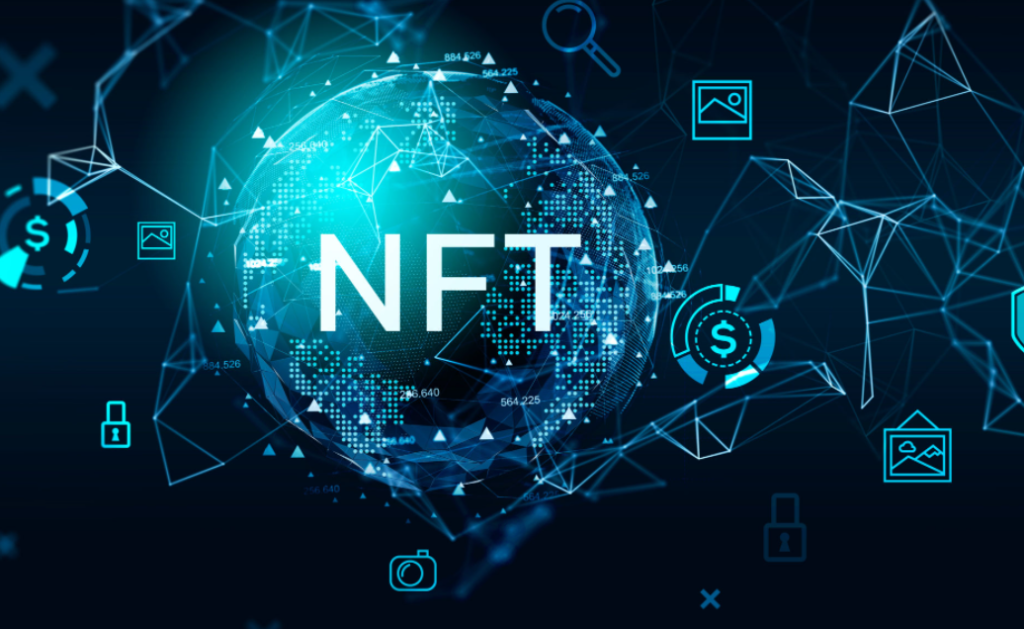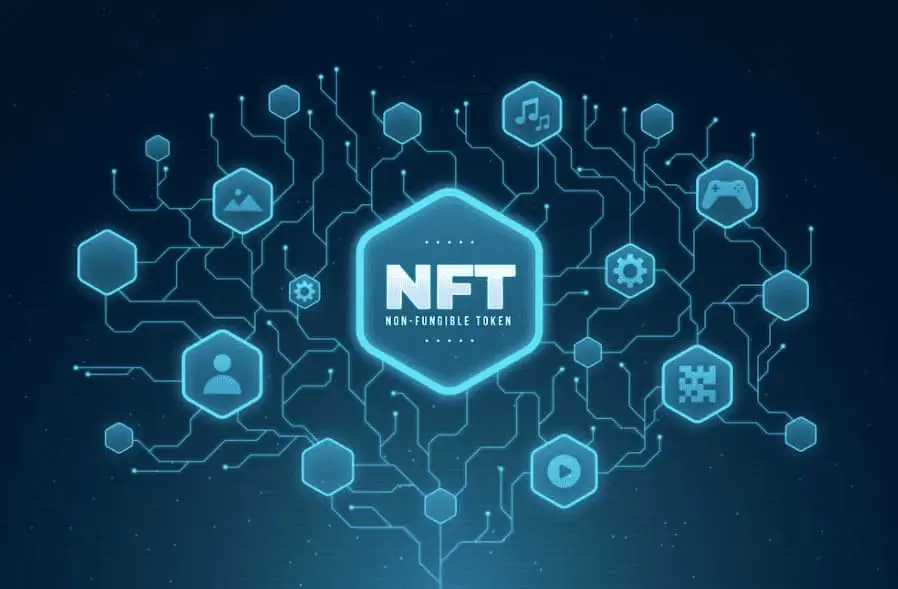In 2025, the crypto market reached a mature stage. Smart contracts have become part of everyday architecture, metaverses have gained influence, and digital assets have become the standard in business. In this context, the question of what NFT tokens are has become particularly relevant: not as a passing trend, but as the basis for the digitalization of rights, identity, and ownership in the Web3 economy.
What are NFT tokens?
NFT (non-fungible tokens) means “non-fungible tokens”. Each of them represents a separate digital object recorded on the blockchain. Unlike fungible tokens (e.g. USDT, ETH), which can be exchanged one-to-one, each NFT has an individual identifier and metadata that cannot be forged or cloned.
What are NFT tokens in technical terms? They are records in a smart contract with built-in information: authorship, creation date, file URI, license, and transaction history. This structure makes possession a proof of authenticity, unrepeatability and ownership, which cannot be lost or replaced by a simple copy.
The Market in 2025: Reinvented
 By 2025, the NFT market will have abandoned inflationary collectibles and focused on utility objects. The focus has shifted from art and advertising to practical solutions. Asset owners will gain access to services, features, leasing, DAO voting, rating verification, and even digital identity. What are NFT tokens today: a club pass, an event ticket, a letter of credit, a subscription, a certificate, API access, or a share on a decentralized platform? Instruments have become legally meaningful objects with respect to corporate law.
By 2025, the NFT market will have abandoned inflationary collectibles and focused on utility objects. The focus has shifted from art and advertising to practical solutions. Asset owners will gain access to services, features, leasing, DAO voting, rating verification, and even digital identity. What are NFT tokens today: a club pass, an event ticket, a letter of credit, a subscription, a certificate, API access, or a share on a decentralized platform? Instruments have become legally meaningful objects with respect to corporate law.
Practical application: what are NFT tokens?
NFTs are used in logistics, real estate, education, insurance, music, film, and sports. Thanks to tokenization, the design, distribution, and control of assets have become dozens of times easier. By 2025, the asset will be used as:
a key to launching applications and subscriptions (access via token);
- a voting tool in DAOs and decentralized games;
- KYC identification element without revealing personal data;
- registration of intellectual property rights;
- digital receipt of a financial loan;
- access to a rented physical or digital asset;
- certificate of completion of a course or exam;
- Internal currency of the metaverse with a specific purpose.
Smart contracts and the ERC standard
NFTs are created according to the ERC-721 standard (or derivatives ERC-1155, ERC-3525, etc.). The standards define which functions a token must support: verification of the owner, translation, URI binding and creation and destruction events.
At the smart contract level, the functionality is fully automated. The owner has the ability to freely dispose of the token, independently of a third-party intermediary. It can be transferred, sold, burned, delegated or used as collateral in DeFi protocols. What are NFT tokens in the eyes of a developer? An object with a clear ABI interface and integration into the blockchain infrastructure. No bank, registrar or notary approval is required for its implementation. The code automates everything.
Law and identity: the new role of NFTs in the digital society
The legal recognition of NFTs is a logical step in the digital transformation. In 2025, the token began to fulfill the function of digital identity. Instead of usernames and passwords, users provide a token that is linked to a wallet and confirmed by a series of smart contracts. NFTs have become not only an asset, but also an ‘identity key’: a digital signature, a business card and an ID in one.
In education, objects such as diplomas are used. The admissions committee, employer or client receives an NFT certificate with immutable metadata: course name, study hours, completion date and name of the teacher. This excludes forgery and makes it easier to verify data.
What are NFT tokens in metaverses: building blocks?
The gaming industry continues to use NFTs as modular components in virtual worlds. Virtual lands, buildings, skins, artifacts, and contracts are created as assets, allowing the user to own and control the content created in the game outside of the platform. Players sell character skins, rent out arenas, collect equipment in the form of tokens, and use them in projects ranging from role-playing games to e-sports. In metaverses, NFTs fulfill multiple functions: land rights, event tickets, access to private clubs, personalized avatars, and branded visuals.
Financial ecosystem: DeFi and NFT in one package
Decentralized finance (DeFi) goes beyond using NFTs as art. Tokens have become collateral in lending protocols, a guarantee for launching new projects, and a digital asset that can be fractionalized, traded, and used to generate liquidity. A project with real estate-backed NFTs gives investors access to rental income. On DeFi platforms, you can earn interest with tokens, participate in staking or receive an airdrop that you can store in your wallet.
Markets and infrastructure: a system of mature solutions
To work with NFTs in 2025, a whole range of tools are used: wallets (MetaMask, Rabby, Phantom), marketplaces (OpenSea, Rarible, LooksRare), collection generators, API integrations, minting tools and airdrops.
Smart contracts are created in visual designers without code. Object owners subscribe to automatic actions: notifications, updates, rollups, DAO participation. What are NFT tokens in this context? An interface between the user and the platform, secured by the blockchain. Thanks to the infrastructure, any brand could launch them without the intervention of a programmer. This is the democratized Web3. Token creation, metadata management, and connection to registries have been simplified, and cross-chain support has been introduced.
Copyright: Protection of content in digital media
Creators use NFTs as a legally meaningful mechanism to protect rights. An artist, musician, or writer obtains authorship of a digital work through a smart contract. The token records the date of creation, the hash file, the creator’s name, and metadata. These are all stored on the blockchain and cannot be edited. This makes counterfeiting impossible and disputes easy to resolve. What are NFT tokens for content creators in 2025? The act of registration. The creator is given a tool that replaces the notary, lawyer, and copyright registry. Marketplaces support royalty payments. When assets are resold, a percentage of the proceeds is automatically transferred to the author. This mechanism provides passive income and makes creativity not only free, but also permanently monetizable.
Business Challenges: B2B Value
Companies are implementing NFTs for access control, employee certification, transaction verification and customer loyalty. Each employee card or specialist badge is issued as a token. Access to sensitive information, areas, files or equipment depends on the presence of assets in the wallet.
Retail chains use them as bonus cards. The customer receives a token with a purchase history, unique offers and the ability to upgrade. In the document flow of companies, these tools replace physical signatures and in logistics they record traces of goods movements. What are NFT tokens for companies? A tool to reduce costs, increase transparency and automate internal processes.
Conclusion
 NFTs are no longer a hype. In 2025, they will be a technologically mature, legally formalized and economically applicable instrument. Each token is an encoded carrier of a unique digital or physical right. They are used in education, the gaming industry, finance, law, business and identity management. What are NFT tokens today? A bridge between the digital and the real world. They register authorship, provide access, manage rights, facilitate interaction and generate trust. The era of superficial views on tools is over.
NFTs are no longer a hype. In 2025, they will be a technologically mature, legally formalized and economically applicable instrument. Each token is an encoded carrier of a unique digital or physical right. They are used in education, the gaming industry, finance, law, business and identity management. What are NFT tokens today? A bridge between the digital and the real world. They register authorship, provide access, manage rights, facilitate interaction and generate trust. The era of superficial views on tools is over.
 en
en  de
de  ar
ar  es
es  nl
nl  hi
hi  fr
fr  it
it  pt
pt  el
el 










